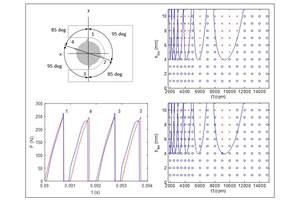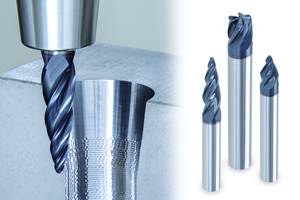Bringing Cryogenics In From The Cold
There are numerous cases of significantly improved performance from steel and carbide cutting tools that have undergone cryogenic (deep freeze) treatment. But wide use of the process seems to suffer from a perceived lack of scientific underpinnings.
There are numerous cases of significantly improved performance from steel and carbide cutting tools that have undergone cryogenic (deep freeze) treatment. But wide use of the process seems to suffer from a perceived lack of scientific underpinnings. While it’s not uncommon in metalworking to have complete understanding of the science of a process lag behind observing the results, this has tended to slow widespread use of cryogenics. The fact is cryogenic treatment works in many applications, but only now are we starting to understand why.
Heat treatment of steel involves the transformation from its softer more malleable annealed state to a harder more durable state. This is done, as it has been for centuries, by heating the steel and then rapidly cooling it. The result is a harder and more wear resistant object. The metallurgical reason for this is that as the steel is heated, it forms an austenite crystal structure or matrix. Rapidly cooling or quenching the steel (traditionally at room temperature) triggers some of the austenite structure to change into a different matrix called martensite. It’s the martensite structure that gives tempered steel its hardness and wear resistance for applications from cutting tools to punch dies.
The goal of heat treatment then is to transform as much of the austenite as possible into martensite. However, some of the austenite is retained even after tempering. Through experiments it was found that if the quench was lower than the traditional room temperature, less austenite was retained. Cryogenic treatment is an extension of the well-known heat and quench cycle. It is specifically about controlled thermal cycling of materials from +300°F to -300°F generally over a 15 to 30 hour period of time.
But, according to Dr. Jeff Levine, founder of Applied Cryogenics in Waltham, Massachusetts, this reaction alone (which has been understood for some time) doesn’t explain all of the results that cryogenically treated materials display. For example non-ferrous materials, copper, brass and even plastics show improved performance after being submitted to the cryogenic process. These materials don’t have austenite or martensite structures. Something else is going on.
Recently, David Collins at University College in Dublin, Ireland, has done research on cryogenic processing. In addition to the well known transformation of retained austenite to martensite, Mr. Collins has identified another important mechanism at work in cryogenic treatment. He has found that beyond the chemical change from austenite to martensite, some carbon precipitates out of these existing matrices when the material is cooled below the temperature where the change takes place. This distribution of carbide fines occurs slowly at very low temperatures and is time dependent. His direct measurements demonstrate that the density of these new carbides increases with the dwell time at the low temperatures. As carbide density increases, abrasive wear resistance increases. The experiments also show that colder is better so the cryogenic process, which once used dry ice to achieve -80° to -100°F tempering, is now using liquid nitrogen to get down to -300° temperatures. Better, more consistent results are being achieved at these very low temperatures.
As for the effects of cryogenics in non-ferrous materials, Dr. Levine postulates that in addition to the chemical changes of deep freezing, some of the residual stresses, which are found in the microstructure of all materials, seem to be reduced by the cryogenic process. While this is yet to be conclusively proved by experimentation, it is strongly supported by empirical data gathered in applications. Dr. Levine’s hope is that research supported by industry and academia, along the lines of Mr. Collins’ work, can shed more light on the residual stress question.
Science not withstanding, it is results that interest shops in new processes. There are numerous cases of significantly improved performance of steel and carbide cutters that have been cryogenically treated. The process is cost effective and has worked wonders in many applications. The goal of Dr. Levine and others in this industry is to help disseminate understanding of the process so the results are consistent and predictable. “We want to take the “black magic” out of cryogenics and replace it with understanding,” says Dr. Levine.
Related Content
Twin Spindle Design Doubles Production of Small Parts
After experiencing process stalls in the finishing stage of production, Bryan Machine Service designed an air-powered twin spindle and indexable rotating base to effectively double its production of small parts.
Read MoreThe Impact of Cutting Teeth Spacing on Machining Stability
Many cutter designs are available, and variable teeth spacing (or variable pitch) cutters can be used to influence milling stability. Let’s discuss why teeth spacing affects stability.
Read MoreHow to Tackle Tough Angled Pocket Milling With Two Tools
Milling a deep pocket with a tight corner radius comes with unique challenges, but using both a flat bottom drill and a necked-down finishing tool can help.
Read MoreTungaloy Expands Line of Barrel-Shaped End Mills
The new SolidMeister barrel end mills are efficient tools for complex 3D-surfacing operations used in mold making, orthopedic implants and the machining of other freeform surfaces.
Read MoreRead Next
3 Mistakes That Cause CNC Programs to Fail
Despite enhancements to manufacturing technology, there are still issues today that can cause programs to fail. These failures can cause lost time, scrapped parts, damaged machines and even injured operators.
Read MoreThe Cut Scene: The Finer Details of Large-Format Machining
Small details and features can have an outsized impact on large parts, such as Barbco’s collapsible utility drill head.
Read More




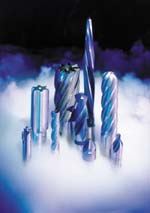
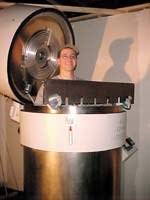
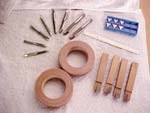








.png;maxWidth=300;quality=90)



.png;maxWidth=300;quality=90)



